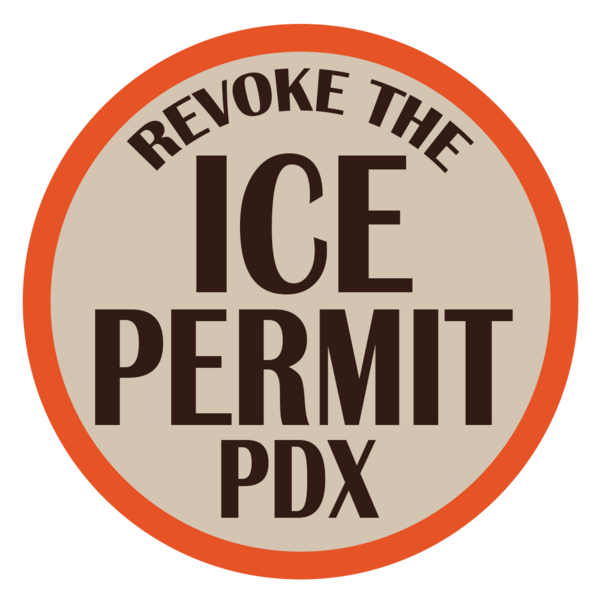Oregon’s Riot Law was Designed to Suppress Protest
Oregon’s current riot law was born in a period of major political upheaval. In the late 1960s and early 1970s, lawmakers across the country responded to the Civil Rights Movement and anti–Vietnam War protests by passing legislation that gave police broad authority to shut down demonstrations. Oregon was no exception.
More than 50 years later, that law remains on the books. It’s vague, overly broad, and prone to abuse.
What the Law Says
Under ORS 166.015, a riot occurs when six or more people engage in “tumultuous and violent conduct” that creates a “grave risk of causing public alarm.”
But here’s the problem:
- The term “tumultuous” is not defined in Oregon statute. It is left entirely to interpretation.
- Police do not need proof of actual violence. The law allows a riot declaration based on perceived risk or potential to cause public alarm.
- This means loud chanting, large crowds, or emotionally charged gatherings can be enough to trigger a riot declaration — even when nothing dangerous is actually happening.
Once a riot is declared, officers are authorized to use force, including tear gas, rubber bullets, flashbangs, and mass detainment techniques. The ACLU of Oregon explains these risks clearly in their Protester Rights guide.
Why This Law Still Matters
This law was crafted to control protests, not protect public safety. Its roots lie in a time when authorities were actively working to silence racial justice movements and anti-war voices. Today, it remains a tool that can be used to chill public dissent.
If a protest is simply loud or makes someone uncomfortable, that alone can legally justify escalation under current law. That undermines the constitutional right to free assembly and creates a chilling effect, especially for movements that already face discrimination.
Major media outlets have also highlighted these problems. In 2020, OPB reported that the laws governing riot declarations are vague and have roots in Oregon’s deeply racist past. As State Rep. Janelle Bynum explained, much of Oregon’s riot and crowd control statutes were developed during the 1960s and 1970s while protests for Black civil rights were occurring in Portland. OPB documented how police declared riots on 23 occasions between May 29 and August 27, often for incidents as minor as water bottles being thrown or spray paint being used.
Similarly, NPR reported that the legal definition of riot allows for wide discretion and disproportionately affects nonviolent protesters. Portland Police Deputy Chief Chris Davis admitted that deciding when enough “tumultuous” conduct has occurred to justify a riot declaration is ultimately subjective. Protesters like Folasade Ogunfiditimi described how quickly riots were declared, sometimes over minor or even trivial events, leading to unnecessary force being used indiscriminately against large crowds.
Examples of Abuse
June 2025, ICE Facility - “No Kings” Protest:
- Portland police and federal officers declared a riot at the ICE facility around 6:30 p.m. despite limited incidents of violence. The declaration enabled rapid escalation, with tear gas and flashbangs deployed almost immediately against largely peaceful demonstrators. Critics argue this premature declaration unnecessarily escalated tensions and infringed on First Amendment rights.
2020 George Floyd Protests:
- During months of protests in 2020, Portland police frequently declared riots after isolated incidents, such as minor property damage or confrontations involving small groups. Protesters were subjected to mass tear gas deployments, rubber bullets, and aggressive arrests even when large portions of the crowd remained peaceful.
- Federal agents, often in unmarked uniforms, detained protesters in unmarked vehicles without clear identification. This sparked national outrage, with Governor Kate Brown and Mayor Ted Wheeler condemning the tactics as abuses of power and attacks on democratic rights.
2018 Patriot Prayer Rallies:
- At several Patriot Prayer rallies and counter-protests, police were accused of declaring riots and deploying crowd-control munitions disproportionately against counter-protesters, raising concerns about selective enforcement and biased application of the riot law.
Civil rights groups like the ACLU of Oregon have challenged these tactics in court, arguing that vague laws and aggressive enforcement tactics violate constitutional rights to free speech, assembly, and due process.
What Needs to Change
We urgently need clarity, accountability, and civil liberties protection:
- Remove vague terms like “tumultuous” or define them with clear, objective standards.
- Require documented evidence of violence or an imminent threat before force is authorized.
- Establish independent oversight over riot declarations and crowd-control decisions.
- Strengthen legal protections for peaceful protest and public assembly.
We Deserve Better
A functioning democracy requires more than the right to vote. It depends on the freedom to speak, gather, and demand change. Oregonians deserve a legal framework that protects those rights — not one that treats peaceful protest as a threat.
It’s time to update Oregon’s riot law.


